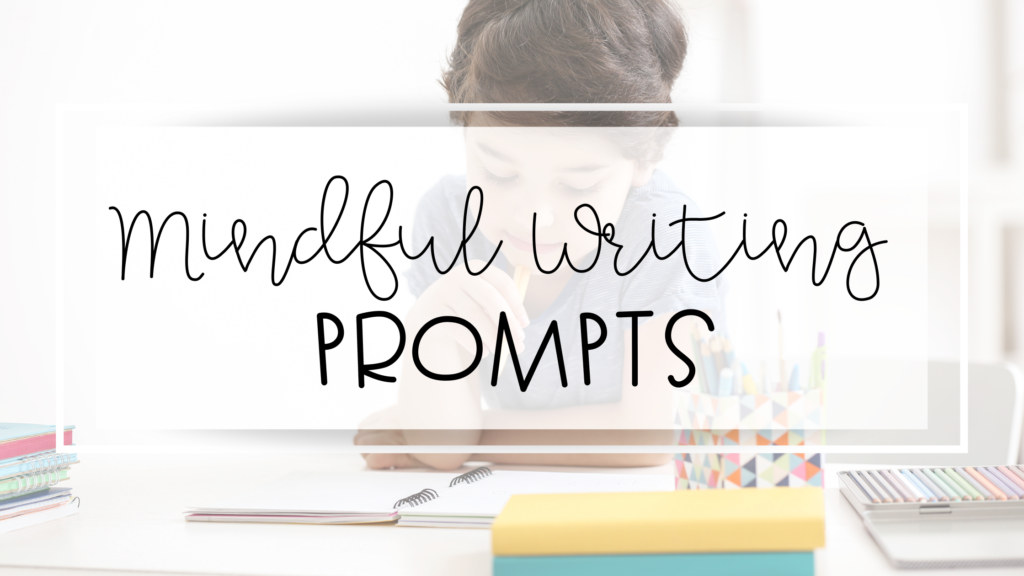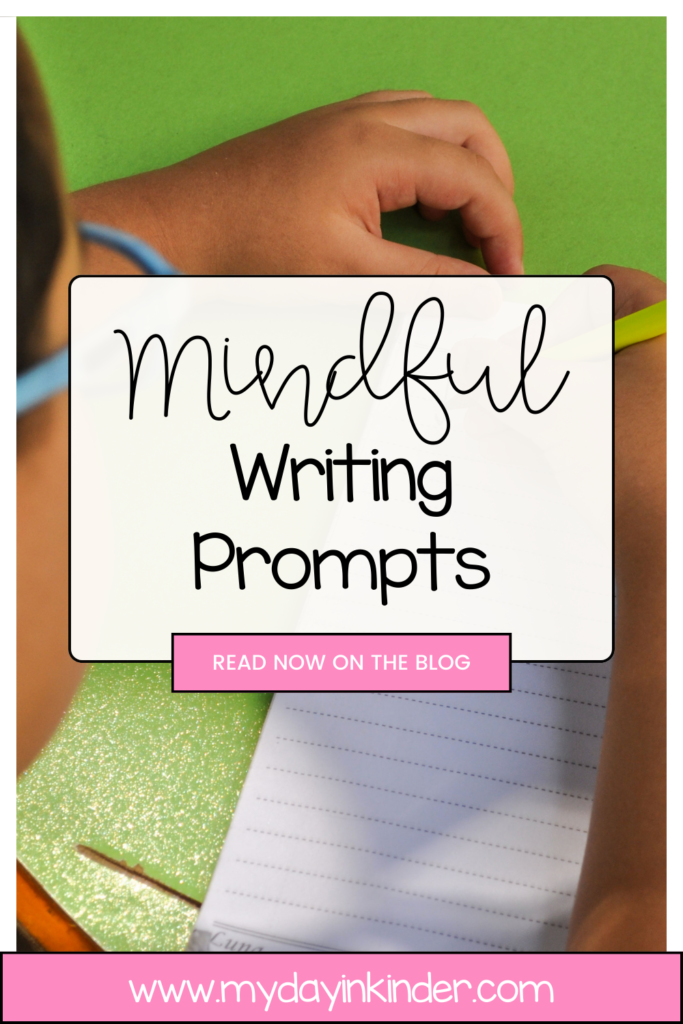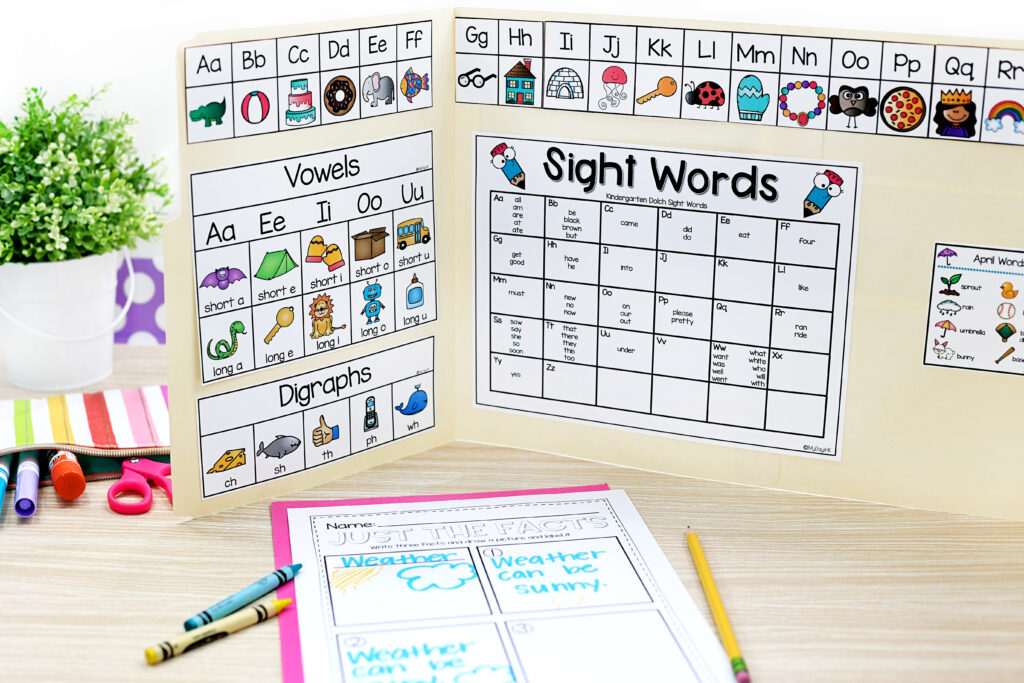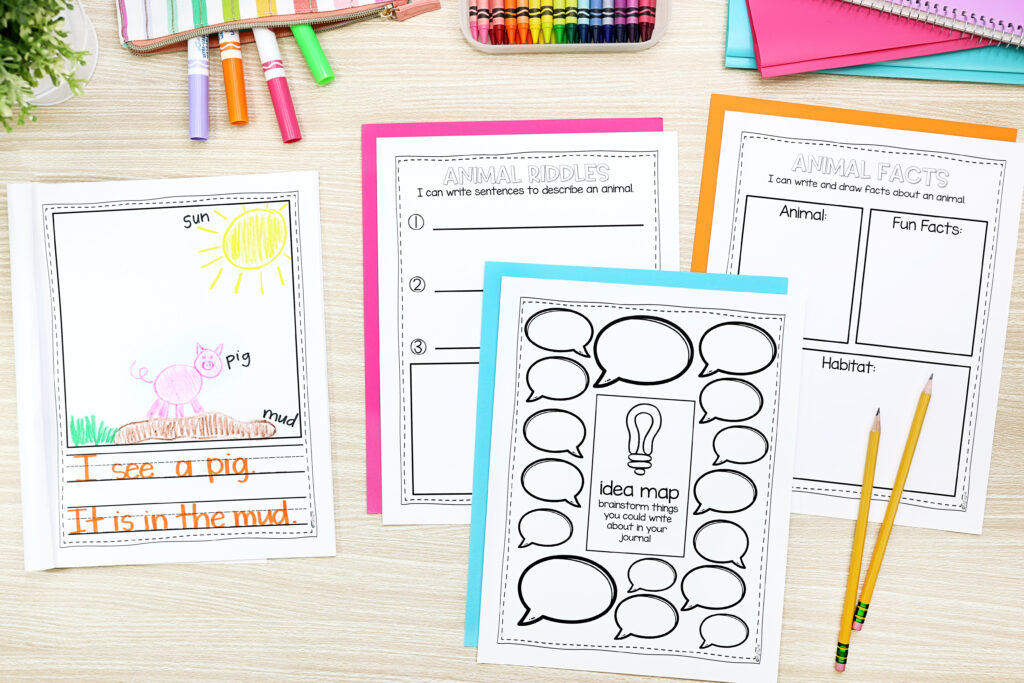Cultivating Calm Minds: Using Mindful Writing Prompts for Kindergarten
As teachers, we understand the importance of fostering a positive and calm learning environment for our young learners. Mindfulness is a powerful tool that can help kindergarten students develop focus, self-awareness, and emotional regulation. So, let’s really talk about ways we can explore the concept of mindfulness and share creative writing prompts that promote mindfulness in the kindergarten classroom. There are definitely ways to do this, but one of the most effective ways is to incorporate mindful writing prompts into your classroom.

What is Mindfulness?
Mindfulness is the practice of being present and fully engaged in the current moment without judgment. For kindergarteners, this means helping them develop an awareness of their thoughts and feelings while cultivating a sense of calm and focus. Mindfulness activities can be seamlessly integrated into various aspects of the curriculum, including writing.

Different Ways to Teach Mindfulness to Kindergarteners
Alright, let’s dive into the fun stuff! Teaching mindfulness to our little buddies in kindergarten is like adding magic to our daily routine. No need for fancy tricks—just some cool, easy strategies to help them chill out and be in the moment. We’ll explore everything from taking deep breaths to imagining awesome scenes. By shaking things up a bit, we can turn our classroom into a zen zone where learning feels more like a chill adventure. So, grab your mindfulness toolkit, and let’s make every day a bit more groovy!
- Breathing Exercises: Teach simple breathing exercises like “flower breaths,” where students inhale deeply as if smelling a flower and exhale slowly as if blowing out a candle. This helps them focus on their breath and brings awareness to the present moment.
- Mindful Movement: Incorporate gentle movement exercises like stretching or yoga into the daily routine. This helps kindergarteners connect their bodies and minds, promoting a sense of mindfulness.

- Guided Imagery: Use short guided imagery sessions where students close their eyes and visualize a calming scene, such as a meadow with flowers or a beach with gentle waves. Encourage them to share their thoughts and feelings afterward.
- Mindful Listening: Engage students in activities that enhance their listening skills. Play soft music or natural sounds and ask them to close their eyes and focus on the sounds they hear.
- Calm Corner: Create a calm corner where students can relax and reset when needed. Include different objects like fidgets, comfortable pillows, breathing cards, and more to help them become more mindful of their feelings and actions.
Mindful Writing
So, let’s move on to mindful writing, one of my favorite writing activities. You want to think of mindful writing as giving your student’s writing vibes a chill pill! Instead of just scribbling words, it’s all about being in the moment, letting thoughts flow, and having some fun with it. In this section, we’re gonna explore how mindful writing can make putting words on paper feel like a mindful adventure.
Consider using a writing office to help students stay focused and allow them the tools to be successful. When working on mindful writing, students should not feel stressed about sight word spelling, punctuation, grammar, etc. Providing them with a writing office will help alleviate this stress and allow them to focus solely on their writing.
Mindfulness Writing Prompt Examples
These prompts are not your average writing starters; they’re like secret portals that transport young minds into a space of calm and imagination. From gratitude journals to exploring nature with words, these prompts aren’t just about writing – they’re about unlocking the superpower of mindfulness in our little writers.
- Gratitude Journal: Have students write or draw something they are grateful for each day. This encourages positive thinking and helps them appreciate the present moment.
- Emotion Reflection: Ask students to write or draw about a time when they felt a strong emotion. This prompts self-reflection and emotional awareness.
- Sensory Exploration: Provide various objects with different textures, scents, or colors. Ask students to describe their sensory experience through writing or drawing.

- Nature Observation: Take the class outside and have them observe nature. Ask them to write about what they see, hear, and feel, fostering a connection with the environment.
- Mindful Storytelling: Encourage students to create a short story using their imagination, incorporating mindfulness elements. This promotes creativity while reinforcing the practice of being present in their storytelling.
Difference Between Mindful Writing Prompts and “Normal” Writing Prompts
Mindful and “normal” writing prompts are great for kindergarteners. Getting them writing is just plain old important. Students need to practice writing skills. Whether you decide to include mindful writing, “normal” writing prompts, or both, students will benefit from the practice.
If you want to incorporate “normal” and mindful writing prompts into your classroom. Including a monthly writing journal may help students. These monthly writing prompts are a great addition to one of the mindful writing ideas above. These journals can help incorporate more “normal” writing and allow students to practice writing on a specific topic, picture, etc.
Integrating mindfulness into kindergarten writing prompts enhances young learners’ writing skills and nurtures their emotional well-being. By incorporating these mindful writing prompts into your daily routine, you’re helping to create a positive and focused learning environment that benefits both students and teachers alike.



